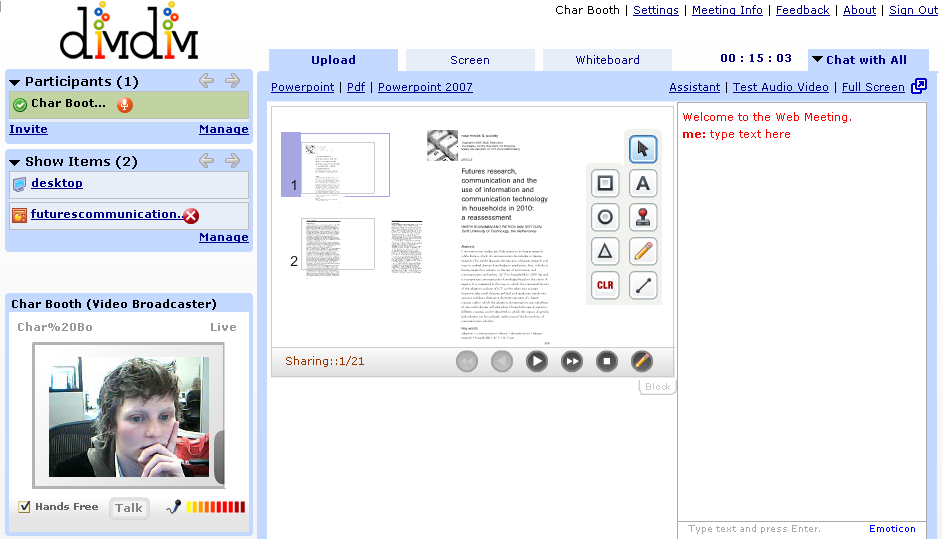Bjarne Stroustrup, inventor of C++ and author of The C++ Programming Language
I like my code to be elegant and efficient. The logic should be straightforward to make it hard for bugs to hide, the dependencies minimal to ease maintenance, error handling complete according to an articulated strategy, and performance close to optimal so as not to tempt people to make the code messy with unprincipled
optimizations. Clean code does one thing well.
Grady Booch, author of Object Oriented Analysis and Design with Applications
Clean code is simple and direct. Clean code reads like well-written prose. Clean code never obscures the designer’s intent but rather is full of crisp abstractions and straightforward lines of control.
"Big" Dave Thomas, founder of OTI, godfather of the Eclipse strategy
Clean code can be read, and enhanced by a developer other than its original author. It has unit and acceptance tests. It has meaningful names. It provides one way rather than many ways for doing one thing. It has minimal dependencies, which are explicitly defined, and provides a clear and minimal API. Code should be literate since depending on the language, not all necessary information can be expressed clearly in code alone.
Michael Feathers, author of Working Effectively with Legacy Code
I could list all of the qualities that I notice in clean code, but there is one overarching quality that leads to all of them. Clean code always looks like it was written by someone who cares. There is nothing obvious that you can do to
make it better. All of those things were thought about by the code’s author, and if you try to imagine improvements, you’re led back to where you are, sitting in appreciation of the code someone left for you—code left by someone who cares deeply about the craft.

Ward Cunningham, inventor of Wiki, inventor of Fit, coinventor of eXtreme Programming. Motive force behind Design Patterns. Smalltalk and OO thought leader. The godfather of all those who care about code.
You know you are working on clean code when each routine you read turns out to be pretty much what you expected. You can call it beautiful code when the code also makes it look like the language was made for the problem.
If you are a developer, I advice that you should read this book. This is a very exciting book!







![Reblog this post [with Zemanta]](http://img.zemanta.com/reblog_e.png?x-id=f1695ecb-b2e7-4cf2-b51d-eb29b62e869d)








![Reblog this post [with Zemanta]](http://img.zemanta.com/reblog_e.png?x-id=c8157e11-a119-4e45-a227-11b4168de99c)

![Reblog this post [with Zemanta]](http://img.zemanta.com/reblog_e.png?x-id=bc090122-2c7c-4db8-a066-2fb4e5039a1c)




![Reblog this post [with Zemanta]](http://img.zemanta.com/reblog_e.png?x-id=4fa1ecba-ef96-4808-af11-0a5c39a1233e)
 Deceptively simple but powerful exercise for learning how to work together and communicate in small to medium sized groups.
Deceptively simple but powerful exercise for learning how to work together and communicate in small to medium sized groups. Participants may be confused initially about the paradoxical behavior of the Helium Stick.
Participants may be confused initially about the paradoxical behavior of the Helium Stick. This is a popular, engaging small group initiative activity which always "works", providing a rich teamwork challenge for about 30-45 minutes. Involves thinking, imagination, action, fantasy, risk and an attractive solution.
This is a popular, engaging small group initiative activity which always "works", providing a rich teamwork challenge for about 30-45 minutes. Involves thinking, imagination, action, fantasy, risk and an attractive solution. Use the rope to create a circle at least 8 ft in diameter on the ground to represent the toxic waste radiation zone. The larger the radiation zone, the more difficult the activity.
Use the rope to create a circle at least 8 ft in diameter on the ground to represent the toxic waste radiation zone. The larger the radiation zone, the more difficult the activity. Distribute "mines" e.g., balls or other objects such as bowling pins, cones, foam noodles, etc.
Distribute "mines" e.g., balls or other objects such as bowling pins, cones, foam noodles, etc. This engaging group activity helps develop communication skills, perspective taking, and problem solving skills.
This engaging group activity helps develop communication skills, perspective taking, and problem solving skills.
 The activity can be run in many different ways.
The activity can be run in many different ways. Framing, e.g.,"The group must work together to ensure everyone manages to get aboard the new management structure. As time goes by, the team must become closer to deal with shrinking margins and increased competition." [www.bushsports.com.au]
Framing, e.g.,"The group must work together to ensure everyone manages to get aboard the new management structure. As time goes by, the team must become closer to deal with shrinking margins and increased competition." [www.bushsports.com.au]
 Can lead to high emotions; people get intensely engaged, particularly when choosing who will survive, and none of the decisions are easy.
Can lead to high emotions; people get intensely engaged, particularly when choosing who will survive, and none of the decisions are easy.
 problem-solving and teamwork.
problem-solving and teamwork. Pick a soft location e.g., grass/beach.
Pick a soft location e.g., grass/beach.